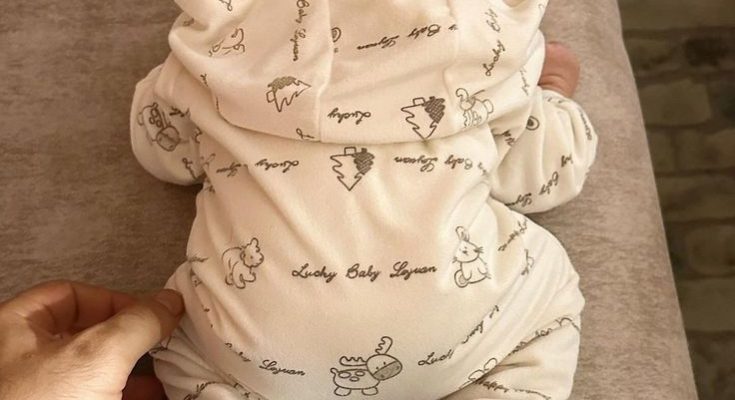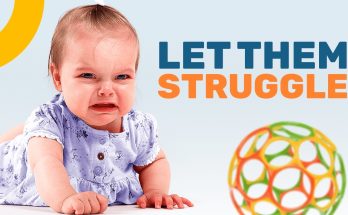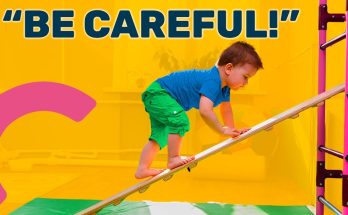The early years of a child’s development are incredibly important, and as toddlers start to explore their world, they learn new concepts every day. One of the first spatial concepts that toddlers begin to understand is the idea of “in” and “out.” These concepts help develop cognitive skills and lay the foundation for more complex ideas in the future. Teaching toddlers “in” and “out” through play and song is not only a fun way to engage them, but it also reinforces their language, motor skills, and understanding of the world around them.
Why “In and Out” is an Important Concept
At around 18-24 months, toddlers begin to show more interest in the world around them and start to develop an understanding of space and movement. The concept of “in” and “out” is crucial because it helps toddlers make sense of where objects are in relation to one another. This simple idea forms the basis of many more complex spatial skills they’ll need later, such as understanding direction, size, and position.
By teaching toddlers this concept early on, you’re not only helping them with their physical development (such as fine and gross motor skills), but you’re also expanding their vocabulary and improving their ability to follow instructions.
How to Teach Toddlers “In and Out” Through Play
Toddlers are natural learners through play, and using toys, games, and everyday objects can provide an excellent opportunity to teach these concepts. Here are some engaging activities and toys that can make learning “in” and “out” fun!
1. Box Play
One of the simplest and most effective ways to teach “in” and “out” is by using a box. A large, empty cardboard box works wonders. Toddlers love to climb in and out of boxes, and this physical activity not only reinforces the “in” and “out” concept but also helps with gross motor skills.
Activity Idea: You can start by showing your toddler how to crawl in and out of the box, and encourage them to repeat the action. Use phrases like, “Can you get in the box?” and “Now, come out!” to reinforce the words.
Toy Recommendation: Many toys and playhouses are designed for toddlers to crawl in and out of, such as play tents or tunnels. These are perfect for teaching “in” and “out” in a fun, interactive way.
2. Shape Sorters
Shape sorters are great toys for teaching a variety of concepts, including “in” and “out.” These toys often involve placing shapes into corresponding holes, so children must physically fit the objects “in” the correct space and then take them “out.”
Activity Idea: As your toddler is playing with a shape sorter, guide them with phrases like, “Put the square in the hole” or “Now take it out.” This activity reinforces not only the concept of “in” and “out” but also helps develop fine motor skills as they manipulate small objects.
Toy Recommendation: Shape sorter toys with various compartments and shapes, like the classic wooden block sorters, can be found in many toy stores. Look for toys with brightly colored shapes to keep your toddler engaged and focused.
3. Hide and Seek Toys
Hide and seek toys, such as small animals or figures that can be hidden inside a container, are fantastic for teaching “in” and “out.” These toys help toddlers understand spatial relationships and improve their memory and problem-solving skills.
Activity Idea: Place small toys inside a box or bag, then ask your toddler, “Can you find the dog in the box?” and help them take it “out.” Repeat with different toys, reinforcing the concept in a playful manner.
Toy Recommendation: Toys like “Pop-Up Animals” or “Hide-and-Seek Balls” are great examples. These toys often feature animals that pop out of or hide inside a container, allowing toddlers to engage in an interactive learning experience.
4. Stacking and Nesting Toys
Nesting toys and stacking cups or blocks are wonderful tools for reinforcing the “in” and “out” concept. These toys help toddlers practice the idea of placing objects inside one another and taking them out, a skill that is essential for early childhood development.
Activity Idea: Take a set of stacking cups and show your toddler how to put a smaller cup “in” a larger one. You can also stack cups on top of each other and encourage them to take one “out” at a time. Use phrases like, “Put the cup in the bigger one” and “Take it out!” to reinforce the lesson.
Toy Recommendation: Stacking rings and nesting cups, such as those made from soft plastic or colorful wood, are great for toddlers to explore. These toys can be played with in various ways, from building towers to fitting pieces inside one another.
Incorporating Song to Reinforce “In” and “Out”
Songs are another excellent way to teach toddlers “in” and “out.” Music helps with memory retention and rhythm, and toddlers often respond well to the repetition of simple songs. You can sing songs that use the “in” and “out” concept to make learning more enjoyable.
1. “In and Out the Dusty Bluebells”
One popular song that teaches the “in” and “out” concept is the song “In and Out the Dusty Bluebells.” This classic song can be sung with hand motions, allowing toddlers to physically act out the concepts as they sing along. Here’s a simple version of the song:
“In and out the dusty bluebells,
In and out the dusty bluebells,
In and out the dusty bluebells,
Who will come to play?”
As you sing, you can encourage your toddler to move in and out of a circle or a designated play area, reinforcing the actions.
2. “The Wheels on the Bus” with “In and Out” Verses
“The Wheels on the Bus” is another song that’s perfect for adding in “in” and “out” verses. You can make up new verses that incorporate these concepts, such as:
“The people on the bus go in and out,
In and out, in and out,
The people on the bus go in and out,
All through the town.”
Adding physical movement to the song, like pretending to go in and out of a bus, can make it even more interactive and engaging.
Conclusion
Teaching toddlers the concepts of “in” and “out” can be a fun and rewarding experience. Using toys like shape sorters, stacking cups, and hide-and-seek toys, along with interactive songs, helps toddlers grasp these spatial concepts while also developing motor and language skills. The key is to make learning enjoyable and engaging, encouraging your toddler to explore and experiment through play. With these tools and techniques, you’ll provide a strong foundation for your toddler’s cognitive development, all while having fun along the way!



